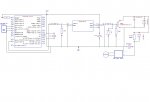IP, all I know about the filter cap is it's 8,000uF, 175V, 200V surge, part number Mallory EAP802X175X5L3PH. I don't know what ripple current it can withstand - how does one determine that? I did use that particular cap only because it's what I happened to have on hand.
Good suggestion about the charge current limit - I will do that and try it once the new batch of IGBTs arrives.
I do appreciate the help given here without the condescention that sometimes seems to appear on this forum. Thank you.
Dippy, I pressume you are referring to this:
"A big fat suitable rated cap between the Drain and Gnd/0V closely placed may help, but be aware of ripple values."
Yes, I did actually read it and installed a big cap. The "be aware of ripple values" part was also read but I don't (didn't) know how to deal with it. Perhaps you can elaborate a bit.
The high gate resistor was recommeded by Goeytex for the particular IGBT he suggested I try. Since that was not available from Digikey, I went with another similar part and used the same resistor although, in a previous post, I attempted to ask how to calculate the proper value. In any case, I'm not sure how that relates to the IGBT blowing on power up when there is no switching going on. Should I be using a lower value?
It may well be an unsuitable design spec - I would not contest that for a moment. But that's why I'm here, trying to turn it into something that works. What "critical measuremts" at low voltages would you suggest I make?

